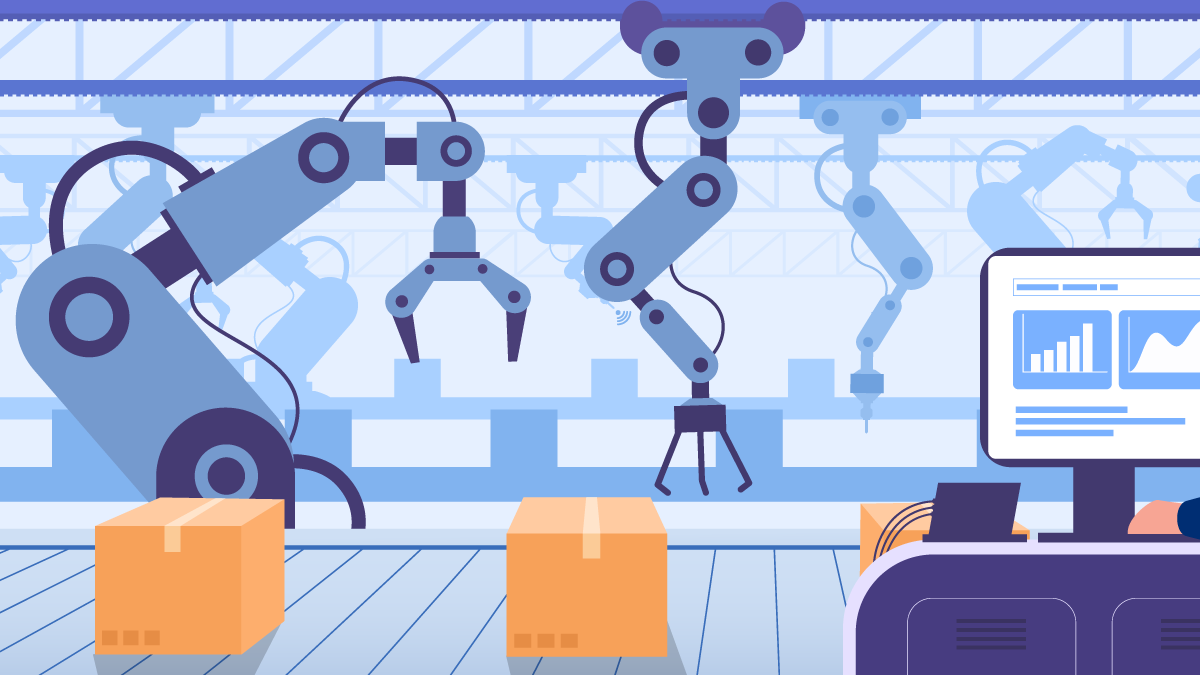
The packaging industry has been changing over the last few years. For instance, automated packaging is now being used by many companies and it’s growing in popularity for a number of reasons. Automated packaging has helped to reduce labor, costs, increase production time and decrease waste while also providing more options for customers when they are shopping.
This article will look at what automated packaging is, how it works and why you should be looking into getting some.
What Is Automated Packaging?
Automated Packaging (AP) is a system that utilizes machinery to assemble and seal products at high volumes. The packaging can be done before or after the product has been assembled, which gives increased flexibility for manufacturers who may want to work on large batches of items in one day. AP machines typically use industrial-strength adhesives so there’s no need for heat sealing with an iron–all you have to do is simply run the machine along the edges of your box and it will automatically affix them together.
This reduces assembly time by up to 90% when compared with traditional methods where manual labor would be required due to human error from inconsistent hand movements across multiple units. When using this technique, employers save money because the qualified staff is only needed to monitor the machines.
Advantages Of Automated Packaging
There are many advantages to automated packaging. One of the main benefits is that it can be more cost-effective than manual labor, which means you will save on costs in the long run.
Automated packing also has better quality control and consistency so you’re less likely to have any problems with your product arriving damaged or out of date.
You don’t need a lot of space for an automated package either—a standard robot arm takes up around 60 square feet, meaning you’ll only need about 400 square feet total if there’s one machine per shift running 12 hours a day (and even fewer if they’ve got two shifts).
Another benefit is that automation can help avoid issues like workplace injuries or unemployment due to a reduced labor pool because employers will have access to reliable machinery which won’t get tired or need any breaks once they’re set up properly.
Automated package machines are also good news for those who suffer from chronic back pain, repetitive stress injury, carpal tunnel syndrome, or other types of physical disabilities—or even just people who dislike manual labor in general.
The last main advantage is that it can be easier to achieve product consistency when you’re using automated packaging.
Common types of automation in packaging
Robotic Automation
This type of automation is often used to automate repetitive tasks in a warehouse. Instead of humans performing the task, robots do it instead. Robots are able to carry out these kinds of monotonous jobs with precision and efficiency that would be difficult for human workers to match.
They can also lift heavy objects without getting tired – something which wouldn’t be possible for most people! While robotic automation requires more upfront capital expenditure than other forms of automation (they’re expensive), they typically have a lower total cost over time as you don’t need to pay wages or hire staff members who will only work part-time due to laws on working hours.
It’s important to balance your ROI expectations with the increased initial investment and make sure that your company is prepared to take on the responsibility of maintaining these machines.
PLC Automation
PLC automation can be used in order to program a machine with instructions for how it should work – so you could set up an assembly line where each station executes one task before passing on the product to continue along. This type doesn’t require any external control systems or outside input; it’s programmed within the system itself.
RFID Automation
RFID stands for Radio Frequency Identification. It uses small chips embedded into products which are then read by receivers using radio waves. The chip stores information about what needs to happen next in terms of processing or production at all stages throughout the supply chain, which can be checked and verified by the RFID reader. This means that there’s less need for humans to monitor what’s happening, which leaves them able to focus on other tasks at hand.
Voice Automation
Voice automation is used in a lot of industries – not just manufacturing. In many cases, it replaces human operators with voice recognition systems that are highly accurate in understanding commands spoken into headsets or via the internet across long distances.
If you’ve ever called customer service while abroad only to have an automated system pick up your call instead, then congratulations – you’ve experienced this type of technology firsthand! It doesn’t require any set language or dialects as well so people around the world can make use of it without having their queries misheard.
The Automated Packaging Process
There are many different types of automated packaging systems that can be used for the production, storage, and transportation of products such as cartons, boxes, sacks, or other containers.
Packaging machines produce packages with volume measures defined by their design. For example, as the folks at Easypack Automation explain Automatic Bagging Machines (FFS) are designed to pack wood pellets, animal feeds, grains, aggregates, and more. This is extremely convenient.
Automatic palletizing devices stack goods on wooden boards to form one single unit in order to facilitate transport. Automated inspection equipment is able to detect any product faults before packing them (e.g. tears or holes). Robotic arms conduct automated testing procedures onto samples taken from each batch produced at high-speed thanks also to automatic monitoring systems known as “Quality Control”.
When automated inspection systems are not used, a machine vision system is mandatory to avoid any manual inspections which could be prone to errors. The Machine Vision System consists of cameras that capture an image of the product and identify it by measuring its shape, size, or other characteristics (e.g: color). Once identified, data about each package can then be stored on a database for later analysis such as monitoring line performance indicators in order to optimize production rates.
The Benefits To The Environment
Automated packaging in a manufacturing facility can help with reducing the amount of energy it takes to power machinery and using fewer consumables like water or chemicals.
It also reduces waste by having shorter production cycles. The equipment is more efficient than human labor because it runs 24 hours per day without breaks for meals or holidays.
The automation process could reduce carbon dioxide emissions as well as other hazardous materials that are created from producing goods through manual processes.
Automated packaging is a new process that provides convenience for the consumer by packing products in their desired order. This reduces time spent on manual labor and increases efficiency when it comes to shipping out orders quickly. Automating your packaging also saves you money because of less wasted materials like tape or boxes.




